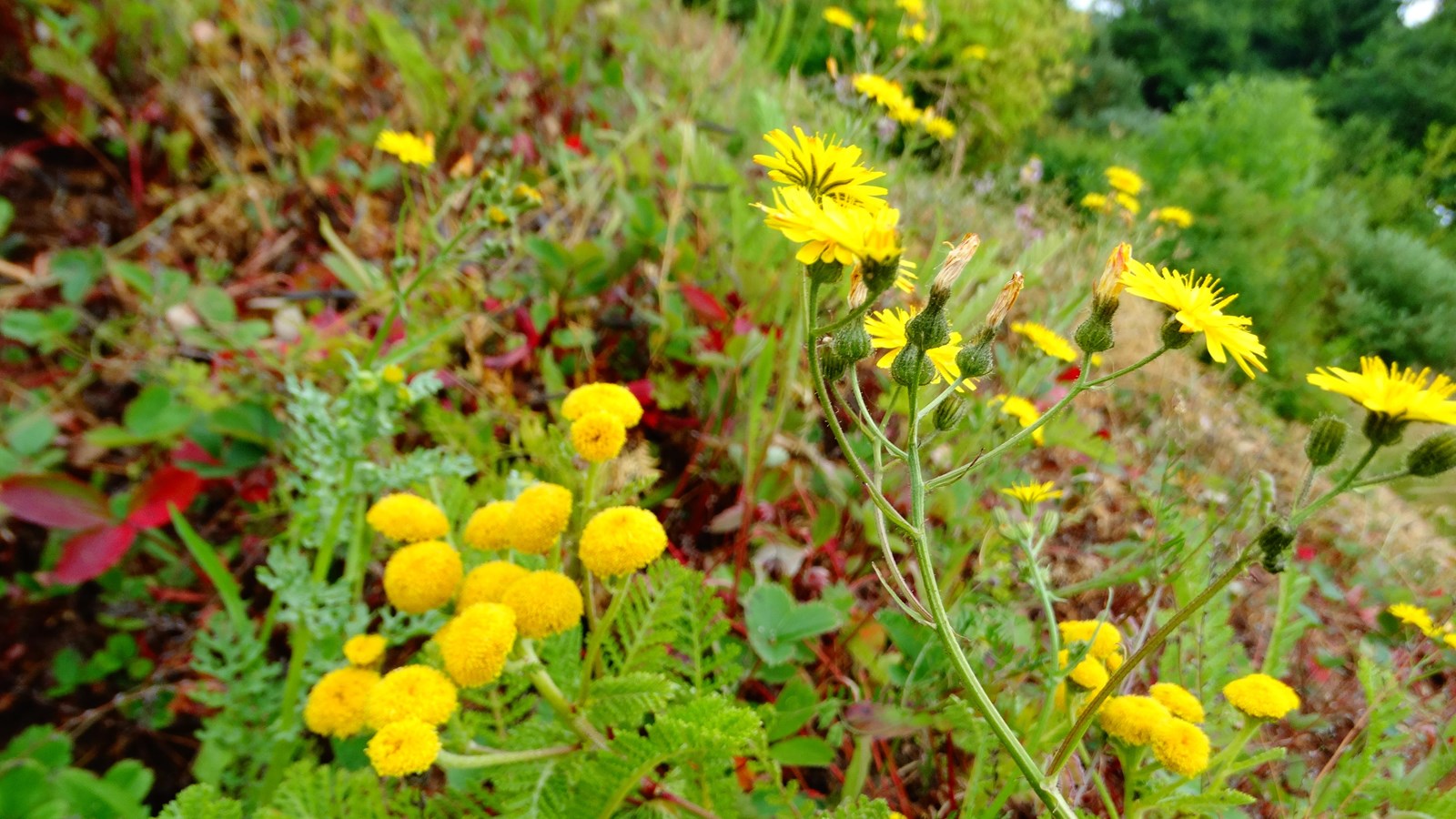Last updated: September 6, 2024
Place
Tansy Point

NPS Photo
Benches/Seating, Historical/Interpretive Information/Exhibits, Parking - Auto, Trailhead
Lewis and Clark NHT Visitor Centers and Museums
This map shows a range of features associated with the Lewis and Clark National Historic Trail, which commemorates the 1803-1806 Lewis and Clark Expedition. The trail spans a large portion of the North American continent, from the Ohio River in Pittsburgh, Pennsylvania, to the mouth of the Columbia River in Oregon and Washington. The trail is comprised of the historic route of the Lewis and Clark Expedition, an auto tour route, high potential historic sites (shown in black), visitor centers (shown in orange), and pivotal places (shown in green). These features can be selected on the map to reveal additional information. Also shown is a base map displaying state boundaries, cities, rivers, and highways. The map conveys how a significant area of the North American continent was traversed by the Lewis and Clark Expedition and indicates the many places where visitors can learn about their journey and experience the landscape through which they traveled.
Clark recorded the visit in his journal, stating:
The vote itself was recorded by John Ordway, an expedition member, who wrote:“A fair morning Sent out 6 hunters, and we proceeded to make the following observations [7] a Chief and Several men of the Chin nook nation Came to Smoke with us this evening one of the men brought a Small Sea otter Skin for which we gave Some blue beads— this day proved fair which gave us an oppertunity of drying our wet articles, bedding &c. &c. nothing killed to day except one Brant. the variation of the Compass is 16° East.”
The vote regarding the expedition’s winter quarters is thought to be a rather momentous event in early U.S. history as the first vote in the Pacific Northwest. It’s considered especially noteworthy because Clark’s slave, York, and Sacagawea also voted.“clear pleasant morning. a white frost Several men went out a hunting we put out our baggage to air. The Calumbian River at this place is three miles 660 yards wide. Some of two nations of Indians came to our Encampment the Clatsop and Chinuck nations they behave very well as yet. our officers conclude with the oppinion of the party to cross the River and look out a place for winters quarter Some where as near the ocean as possable on the account of makeing Salt.”
Several years later, in 1851, Tansy Point served as the meeting point between the Superintendent of Indian Affairs for the Oregon Territory, Anson Dart, and representatives from several Chinook nations. The results of these meetings are collectively known as the Tansy Point Treaties. Sadly, the treaties were never ratified by the U.S. government, and the participating tribes lost their land without receiving any of the promised rights outlined in the treaties. They still struggle for federal recognition to this day.
Visitors to the Tansy Point will find spectacular views of the Columbia River and the town of Astoria, located three miles away. A scenic overlook with interpretive panels known as the Lewis and Clark Observation Platform marks the historical location of Lewis and Clark’s stay.
The observation platform can be found by following the Warrenton Waterfront Trail. The trail runs for 4.7 miles through the city of Warrenton. Parking for the trail can be found at both its northern end at Seafarer’s Park and its southern end at Skipanon River Park, with an additional parking area located near the trail’s middle at Eben H. Carruther’s Memorial Park on Fort Stevens Highway. The trailhead at Eben H. Carruther’s Memorial Park is the closest one to Tansy Point.
For more information on the Warrenton Waterfront Trail, visit Warrenton Waterfront Trail. Information on Tansy Point's history can be found at The Columbia River - Tansy Point, Oregon.
